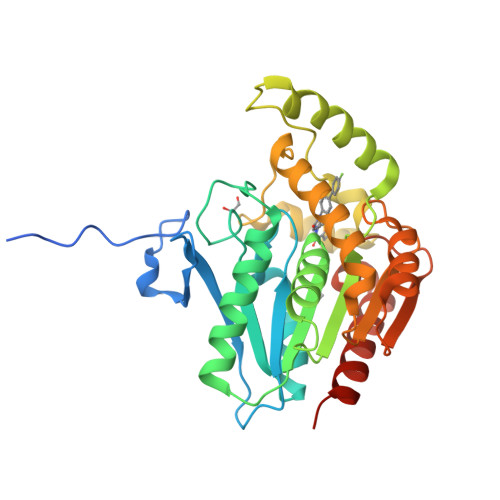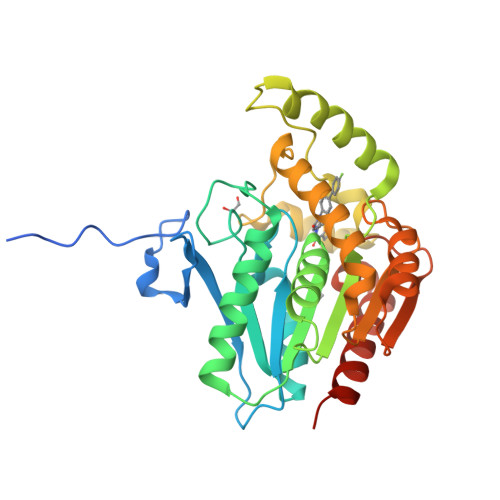Development of High Brain-Penetrant and Reversible Monoacylglycerol Lipase PET Tracers for Neuroimaging.
He, Y., Schild, M., Grether, U., Benz, J., Leibrock, L., Heer, D., Topp, A., Collin, L., Kuhn, B., Wittwer, M., Keller, C., Gobbi, L.C., Schibli, R., Mu, L.(2022) J Med Chem 65: 2191-2207
- PubMed: 35089028
- DOI: https://doi.org/10.1021/acs.jmedchem.1c01706
- Primary Citation of Related Structures:
7PRM - PubMed Abstract:
Monoacylglycerol lipase (MAGL) is one of the key enzymes in the endocannabinoid system. Inhibition of MAGL has been proposed as an attractive approach for the treatment of various diseases. In this study, we designed and successfully synthesized two series of piperazinyl pyrrolidin-2-one derivatives as novel reversible MAGL inhibitors. ( R )-[ 18 F] 13 was identified through the preliminary evaluation of two carbon-11-labeled racemic structures [ 11 C] 11 and [ 11 C] 16 . In dynamic positron-emission tomography (PET) scans, ( R )-[ 18 F] 13 showed a heterogeneous distribution and matched the MAGL expression pattern in the mouse brain. High brain uptake and brain-to-blood ratio were achieved by ( R )-[ 18 F] 13 in comparison with previously reported reversible MAGL PET radiotracers. Target occupancy studies with a therapeutic MAGL inhibitor revealed a dose-dependent reduction of ( R )-[ 18 F] 13 accumulation in the mouse brain. These findings indicate that ( R )-[ 18 F] 13 ([ 18 F]YH149) is a highly promising PET probe for visualizing MAGL non-invasively in vivo and holds great potential to support drug development.
Organizational Affiliation:
Center for Radiopharmaceutical Sciences, Institute of Pharmaceutical Sciences, Department of Chemistry and Applied Biosciences, ETH Zurich, CH-8093 Zurich, Switzerland.




















